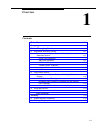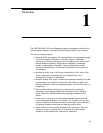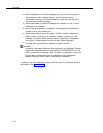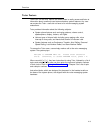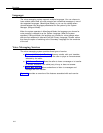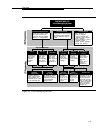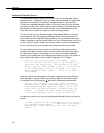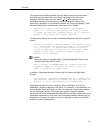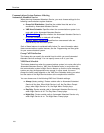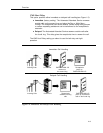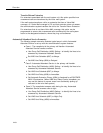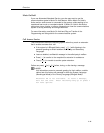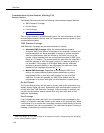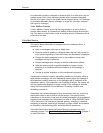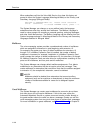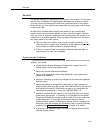
Overview
Communications System Features Affecting
Automated Attendant Service
When planning Automated Attendant Service, you must choose settings for the
following communications system features:
■
■
■
■
Group Call Distribution. Specifies the outside lines that are to be
answered by Automated Attendant Service.
VMS Hunt Schedule. Specifies when the communications system is to
route calls to the Automated Attendant Service.
VMS Hunt Delay. Specifies whether the Automated Attendant Service is
to provide immediate or delayed call handling.
Transfer Return Extension. Specifies how unanswered calls are
transferred by the voice mail system.
Each of these features is explained briefly below. For more information about
these communications system features, see the Programming and Use guide
for your communications system.
Group Call Distribution
This feature lets you specify the outside lines for which you want Automated
Attendant Service coverage. You can specify some or all of your lines.
VMS Hunt Schedule
This feature determines when the communications system is to route calls to the
Automated Attendant Service. VMS Hunt Schedule works in conjunction with
the communication system’s Night Service feature so that the voice messaging
system can play the appropriate menu prompt. In other words, the menu
prompt the caller hears depends on the VMS Hunt Schedule setting you select
and the status of the Night Service button at the receptionist’s extension.
You can choose one of the following VMS Hunt Schedule settings:
■
■
■
Always (factory setting). Routes outside calls to Automated Attendant
Service all the time. When Night Service is off, the Day Menu Prompt
plays; when Night Service is on, the Night Menu Prompt plays.
Day Only. Routes outside calls to Automated Attendant Service only
when Night Service is off. The Day Menu Prompt plays.
Night Only. Routes outside calls to Automated Attendant Service only
when Night Service is on. The Night Menu Prompt plays.
1-8



